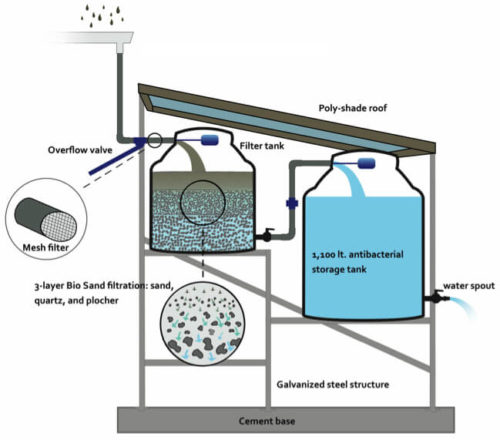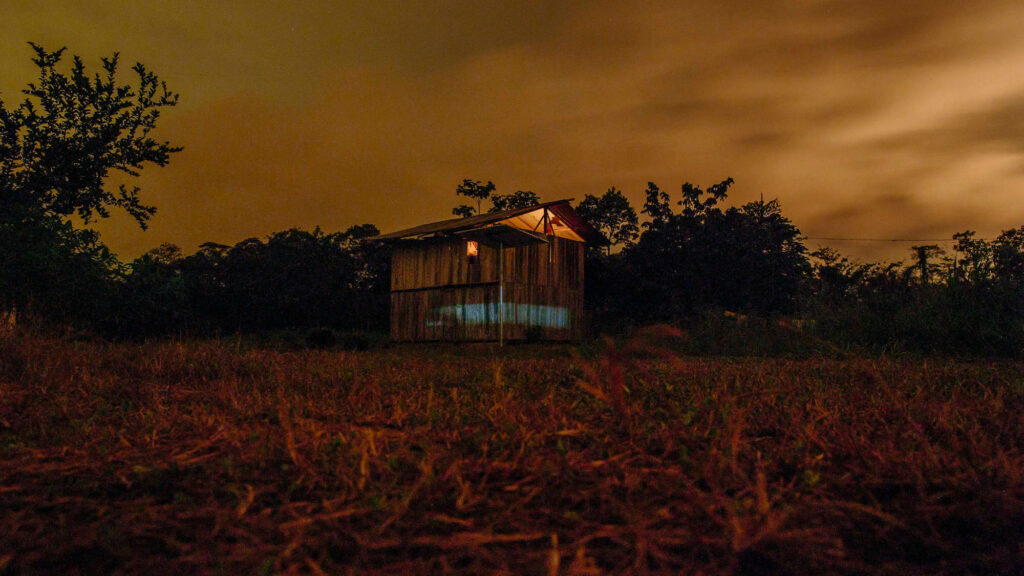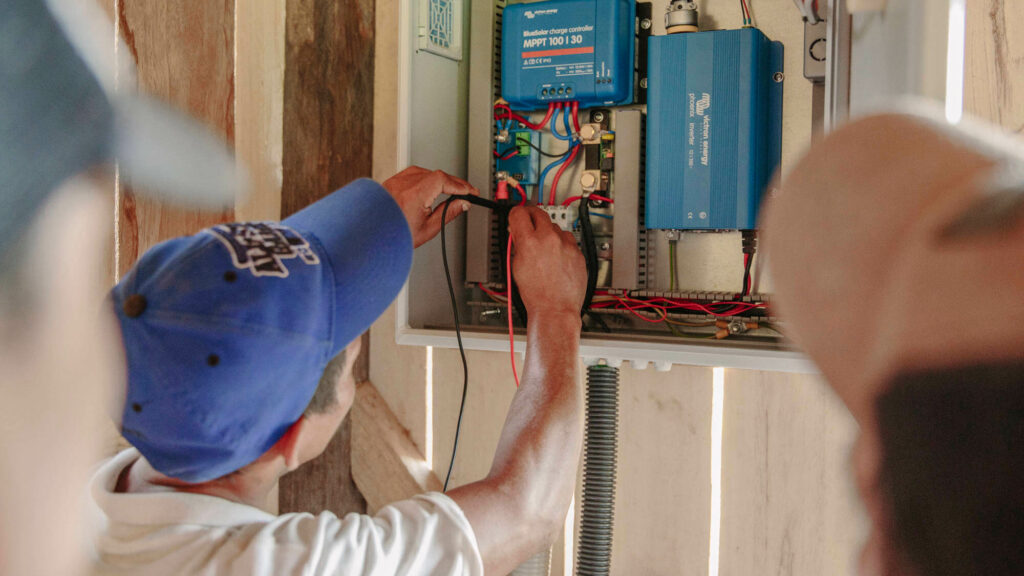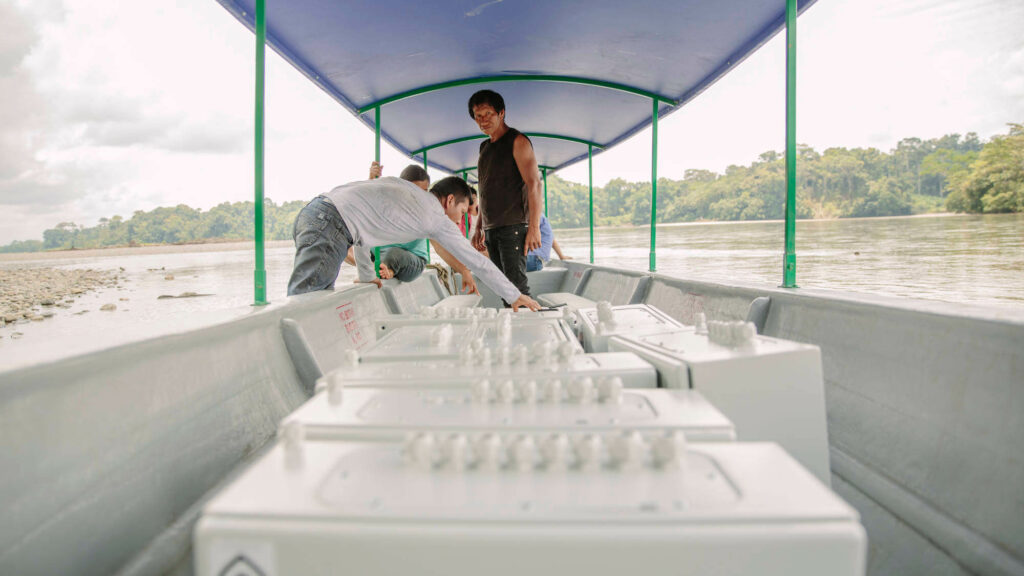Solar Systems
“When your child needs light to do their homework at night and the only option is a gas-powered generator, what else can you do? Here in Mañoko we had to sell bush meat to buy gasoline.”
Armando Ibañez, Secoya.
The Situation
Remote indigenous communities in the Amazon, only accessible by long winding canoe trips or propeller-plane flights onto dirt runways, are the strongholds of Kofan, Siona, Secoya and Waorani traditional way of life; hunting and fishing for their daily protein, cultivating yucca and plantain, weaving baskets out of palm fibers.
Yet, many of these remote communities now find themselves on the frontlines of the expanding extractive frontier, as seismic testing for oil wells and pipeline projects move deeper and deeper into the jungle. For decades, extractive industries and government actors have gained access into indigenous territories through the same offers, “With oil comes progress”, they say, “We will provide your community with clean water, with roads, with electricity.”
121
Installed Systems
16
Communities
The Vision
By building access to renewable energy, we are ensuring the economic and energy independence of families facing newly imposed dependencies on the western world. And with that, we are providing communities with the ability to make choices based on the long-term survival of their families, their cultures and their ancestral homelands.

The Technology
Solar Home System, developed by LOVE FOR LIFE
The photovoltaic (PV) cells of the solar panels absorb sunlight and convert the energy from the sun into direct current (DC) electricity to charge the batteries. This DC electricity is fed to the batteries via a solar charge controller which ensures the batteries are charged most efficiently and not damaged. The charge controller constantly controls and manages the energy flow in the solar electric system. It regulates the state of charge of the batteries and the intensity of the charge. It protects the batteries from overcharge and deep discharge. DC appliances like 12 V LED-lights, cellphone or radio are powered directly from the charge controller which during daylight takes the energy directly from the PV panels and at night from the stored energy in the batteries. The inverter converts lower voltage DC electricity (12V) generated by the solar panels and stored in the batteries into higher voltage alternating current (AC) to power appliances that run with 120 V like electrical power tools, computer, television, etc. The big solar system has an additional device called battery protect that protects the battery from deep discharge, ensuring the longevity of the batteries. It works as a switch that turns off all the loads. The battery protect also communicates with the battery monitor and performs the function according to the information of the battery monitor. The battery monitor works together with a measurement device called Shunt that collects and transmits all the data about the system and sends it to the battery monitor.

The battery monitor indicates the state of charge of the batteries (SOC) and their voltage (V). The battery monitor transmits information to the battery protect when the state of charge of the battery reaches 50%. When this happens, the battery protect will disconnect all loads from the battery to protect the battery from deep discharge and damage. Once the SOC reaches 65% again the battery monitor informs the battery protect and the loads both DC and AC will automatically connect to the battery again.











